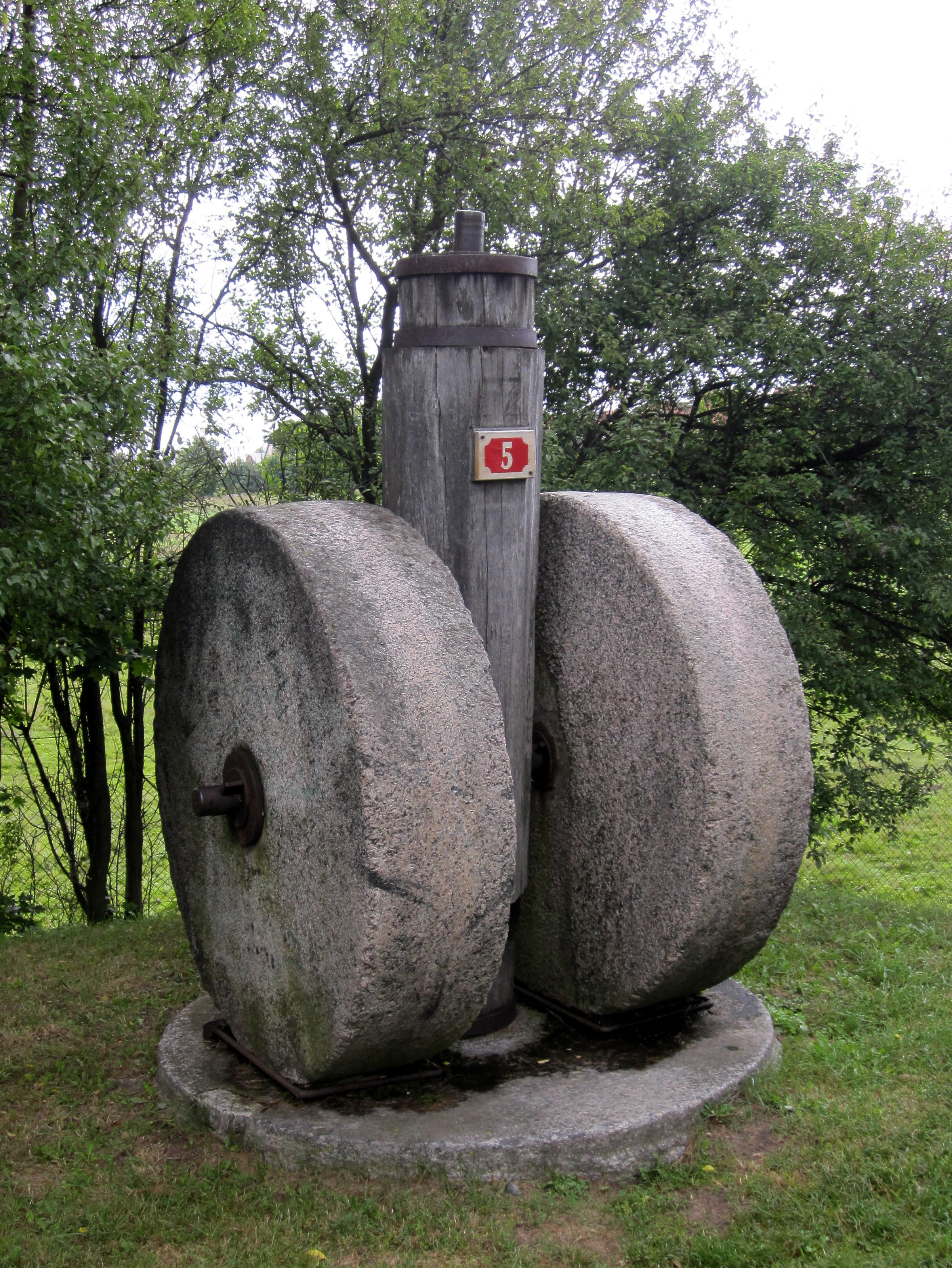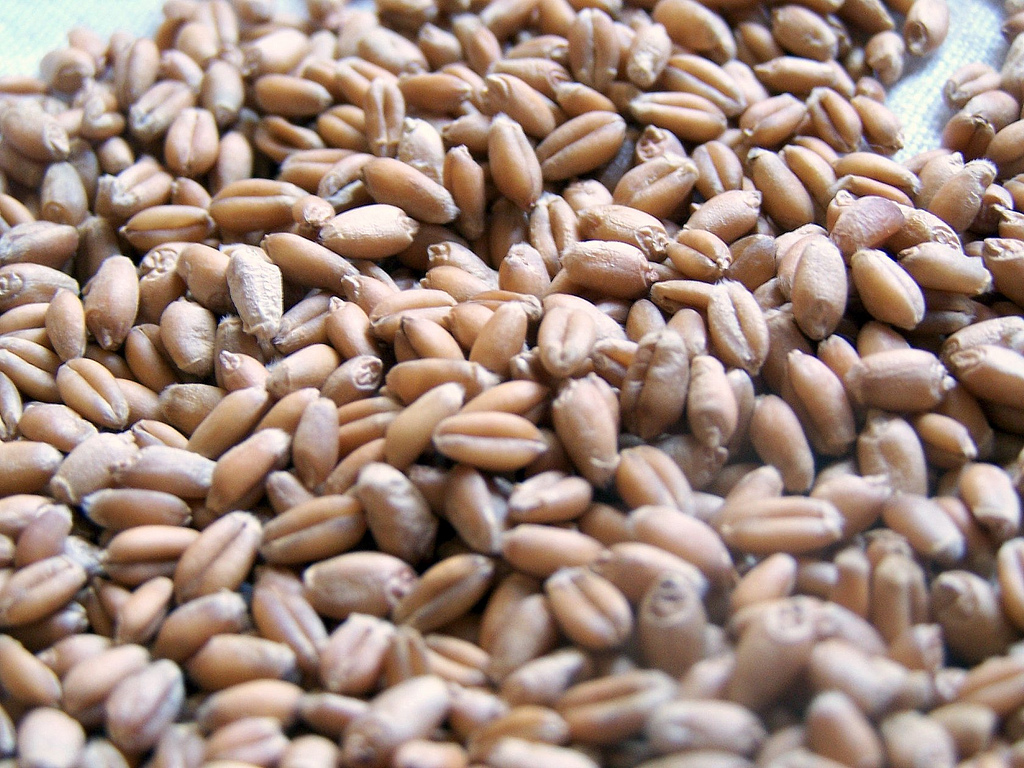|
Roller Milled White Enriched Flour
The Roller Mill was created by Hungarian bakers in the late 1860s and its popularity spread worldwide throughout the 1900s. Roller mills now produce almost all non-whole grain flour. Enriched flour is flour that meets an FDA standard in the United States. Roller milled white enriched flour makes up over 90% of the flour that comes out of the United States. The significance of the roller mill that produces white flour In 2017, well over 90% of the United States commercial flour production was not whole grain. Virtually all of this non-whole grain flour was produced on flour roller mills. These unique mills were first developed in Europe in the 1860s, soon after were patented and introduced into the United States and quickly came to dominate the world's flour milling industry as they continue to do today. Flour roller mills were specifically designed to efficiently separate the bran and germ elements of the wheat kernel. What remains is the endosperm, generally referred to as w ... [...More Info...] [...Related Items...] OR: [Wikipedia] [Google] [Baidu] |
Roller Mill
Roller mills are mills that use cylindrical rollers, either in opposing pairs or against flat plates, to crush or grind various materials, such as grain, ore, gravel, plastic, and others. Roller grain mills are an alternative to traditional millstone arrangements in gristmills. Roller mills for rock complement other types of mills, such as ball mills and hammermills, in such industries as the mining and processing of ore and construction aggregate; cement milling; and recycling. Types Two-roller mills Two-roller mills are the simplest variety, in which the material is crushed between two rollers before it continues on to its final destination. The spacing between these two rollers can be adjusted by the operator. Thinner spacing usually leads to that material being crushed into smaller pieces. Four-roller mills Four-roller mills have two sets of rollers. When using a four-roller mill to mill grain, the grain first goes through rollers with a rather wide gap, which se ... [...More Info...] [...Related Items...] OR: [Wikipedia] [Google] [Baidu] |
Wheat Berry
A wheat berry, or wheatberry, is a whole wheat kernel, composed of the bran, germ, and endosperm, without the husk. Botanically, it is a type of fruit called a caryopsis. Wheat berries have a tan to reddish-brown color and are available as either a . They are often added to salads or baked into bread to add a chewy texture. If wheat berries are milled, whole-wheat flour is produced. Wheat berries are the primary ingredient in an Eastern European Christmas porridge called ''kutya''. In France, cooked durum wheat berries are commonly eaten as a side dish instead of rice or corn. This side dish is often called ''ebly'', from the name of the first brand of prepared wheat berries. Puffed wheat berries.png, Puffed wheat berries File:Wheatberries_sauteed_with_spring_onion.jpg, Wheat berries cooking - soaked then sauteed with spring onion File:Wheatberry salad.jpg, A salad prepared with wheat berries See also *Cuccìa, a Sicilian wheat berry dish *Bulgur, another whole wheat prep ... [...More Info...] [...Related Items...] OR: [Wikipedia] [Google] [Baidu] |
Bran
Bran, also known as miller's bran, is the hard outer layers of Cereal, cereal grain. It consists of the combined aleurone and pericarp. Corn (maize) bran also includes the pedicel (tip cap). Along with cereal germ, germ, it is an integral part of whole grains, and is often produced as a byproduct of milling in the production of refined grains. Bran is present in cereal grain, including rice, maize, corn (maize), wheat, oats, barley, rye and millet. Bran is not the same as chaff, which is a coarser scaly material surrounding the grain but not forming part of the grain itself, and which is indigestible by humans. "chaff, which is indigestible for humans" Composition Bran is particularly rich in dietary fiber and essential fatty acids and contains significant quantities of starch, protein, vitamins, and dietary minerals. It is also a source of phytic acid, an antinutrient that prevents nutrient absorption. The high oil content of bran makes it subject to rancidification, one ... [...More Info...] [...Related Items...] OR: [Wikipedia] [Google] [Baidu] |
Cereal Germ
Cereal germ or Wheat germ: The germ of a cereal is the reproductive part that germinates to grow into a plant; it is the embryo of the seed. Along with bran, germ is often a by-product of the milling that produces refined grain products. Cereal grains and their components, such as wheat germ oil, rice bran oil, and maize bran, may be used as a source from which vegetable oil is extracted, or used directly as a food ingredient. The germ is retained as an integral part of whole-grain foods. Non-whole grain methods of milling are intended to isolate the endosperm, which is ground into flour, with removal of both the husk (bran) and the germ. Removal of bran is aimed at producing a flour with a white rather than a brown color, and eliminating fiber, which reduces nutrition. The germ is rich in polyunsaturated fats (which have a tendency to oxidize and become rancid on storage) and so germ removal improves the storage qualities of flour. Wheat germ Wheat germ or wheatgerm is a co ... [...More Info...] [...Related Items...] OR: [Wikipedia] [Google] [Baidu] |
Endosperm
The endosperm is a tissue produced inside the seeds of most of the flowering plants following double fertilization. It is triploid (meaning three chromosome sets per nucleus) in most species, which may be auxin-driven. It surrounds the embryo and provides nutrition in the form of starch, though it can also contain oils and protein. This can make endosperm a source of nutrition in animal diet. For example, wheat endosperm is ground into flour for bread (the rest of the grain is included as well in whole wheat flour), while barley endosperm is the main source of sugars for beer production. Other examples of endosperm that forms the bulk of the edible portion are coconut "meat" and coconut "water", and corn. Some plants, such as orchids, lack endosperm in their seeds. Origin of endosperm Ancestral flowering plants have seeds with small embryos and abundant endosperm. The evolutionary development of flowering plants trends towards plants with mature seeds with little or no endosp ... [...More Info...] [...Related Items...] OR: [Wikipedia] [Google] [Baidu] |
Dietary Fiber
Dietary fiber (in British English fibre) or roughage is the portion of plant-derived food that cannot be completely broken down by human digestive enzymes. Dietary fibers are diverse in chemical composition, and can be grouped generally by their solubility, viscosity, and fermentability, which affect how fibers are processed in the body. Dietary fiber has two main components: soluble fiber and insoluble fiber, which are components of plant-based foods, such as legumes, whole grains and cereals, vegetables, fruits, and nuts or seeds. A diet high in regular fiber consumption is generally associated with supporting health and lowering the risk of several diseases. Dietary fiber consists of non- starch polysaccharides and other plant components such as cellulose, resistant starch, resistant dextrins, inulin, lignins, chitins (in fungi), pectins, beta-glucans, and oligosaccharides. Food sources of dietary fiber have traditionally been divided according to whether they provide s ... [...More Info...] [...Related Items...] OR: [Wikipedia] [Google] [Baidu] |
Fatty Acid
In chemistry, particularly in biochemistry, a fatty acid is a carboxylic acid with an aliphatic chain, which is either saturated or unsaturated. Most naturally occurring fatty acids have an unbranched chain of an even number of carbon atoms, from 4 to 28. Fatty acids are a major component of the lipids (up to 70% by weight) in some species such as microalgae but in some other organisms are not found in their standalone form, but instead exist as three main classes of esters: triglycerides, phospholipids, and cholesteryl esters. In any of these forms, fatty acids are both important dietary sources of fuel for animals and important structural components for cells. History The concept of fatty acid (''acide gras'') was introduced in 1813 by Michel Eugène Chevreul, though he initially used some variant terms: ''graisse acide'' and ''acide huileux'' ("acid fat" and "oily acid"). Types of fatty acids Fatty acids are classified in many ways: by length, by saturation vs unsaturati ... [...More Info...] [...Related Items...] OR: [Wikipedia] [Google] [Baidu] |
Middlings Purifier
A middlings purifier is a device used in the production of flour to remove the husks from the kernels of wheat. It was developed in Minnesota by Edmund LaCroix, a French inventor hired by Cadwallader C. Washburn and George Christian of the Washburn "A" Mill. It was developed to complement the emerging roller mill technique of the late 19th century, which used corrugated metal rollers instead of abrasive grindstones to grind wheat into flour. The middlings purifier was used to separate the bran from the usable part of the flour. The machine developed by LaCroix passed the partially ground middlings over a screen, and a stream of air blew away the particles of bran. This process was used because winter wheat, sown in the fall and harvested early the next summer was not feasible to grow in Minnesota. Spring wheat was sown in the spring and harvested in late summer. This could be grown by Minnesota farmers, but the conventional techniques of grinding grain between millstones ended ... [...More Info...] [...Related Items...] OR: [Wikipedia] [Google] [Baidu] |
Star Tribune
The ''Star Tribune'' is the largest newspaper in Minnesota. It originated as the ''Minneapolis Tribune'' in 1867 and the competing ''Minneapolis Daily Star'' in 1920. During the 1930s and 1940s, Minneapolis's competing newspapers were consolidated, with the ''Tribune'' published in the morning and the ''Star'' in the evening. They merged in 1982, creating the ''Star and Tribune'', and it was renamed to ''Star Tribune'' in 1987. After a tumultuous period in which the newspaper was sold and re-sold and filed for bankruptcy protection in 2009, it was purchased by local businessman Glen Taylor in 2014. The ''Star Tribune'' serves Minneapolis and is distributed throughout the Minneapolis–Saint Paul metropolitan area, the state of Minnesota and the Upper Midwest. It typically contains a mixture of national, international and local news, sports, business and lifestyle content. Journalists from the ''Star Tribune'' and its predecessor newspapers have won seven Pulitzer Prizes. Histor ... [...More Info...] [...Related Items...] OR: [Wikipedia] [Google] [Baidu] |
Enriched Flour
Enriched flour is flour with specific nutrients returned to it that have been lost while being prepared. These restored nutrients include iron and B vitamins (folic acid, riboflavin, niacin, and thiamine). Calcium may also be supplemented. The purpose of enriching flour is to replenish the nutrients in the flour to match the nutritional status of the unrefined product. This differentiates enrichment from fortification, which is the process of introducing new nutrients to a food. 79 countries have fortification or enrichment for wheat or maize flour made "mandatory", according to the Global Fortification Data Exchange. History White flour became adopted in many cultures because it was thought to be healthier than dark flours during the late Middle Ages. As white flour was more expensive it became a fashionable indicator of perceived social status and tended to be consumed mostly by the richer classes. Another factor was that mold and fungus in the grains, which led to severa ... [...More Info...] [...Related Items...] OR: [Wikipedia] [Google] [Baidu] |





